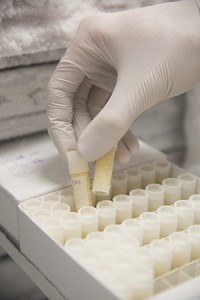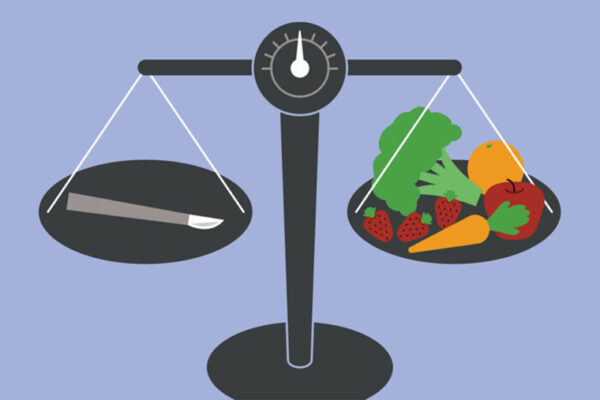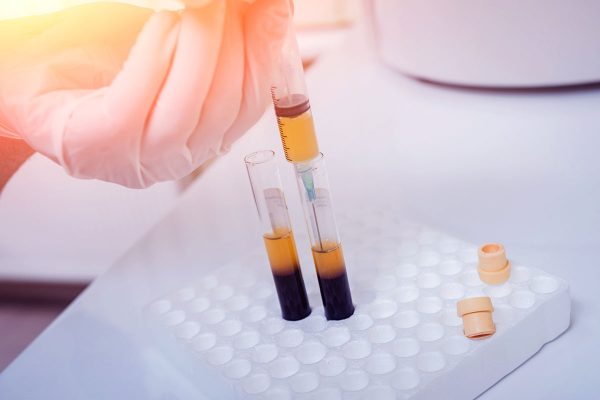The acidity of urine — as well as the presence of small molecules related to diet — may influence how well bacteria can grow in the urinary tract, a new study shows. The research, at Washington University School of Medicine in St. Louis, may have implications for treating urinary tract infections, which are among the most common bacterial infections worldwide.

The study appears in the June 26 issue of The Journal of Biological Chemistry.
Urinary tract infections (UTIs) often are caused by a strain of bacteria called Escherichia coli (E. coli), and doctors long have relied on antibiotics to kill the microbes. But increasing bacterial resistance to these drugs is leading researchers to look for alternative treatment strategies.
“Many physicians can tell you that they see patients who are particularly susceptible to urinary tract infections,” said senior author Jeffrey P. Henderson, MD, PhD, assistant professor of medicine. “We often don’t know why certain people seem to be prone to recurrent UTIs. For a long time, we had inexpensive antibiotics that worked really well for this. But over the last 10-15 years, we have seen a huge jump in bacterial infections that are resistant to many of these drugs.”
With this in mind, Henderson and his team, including first author Robin R. Shields-Cutler, a graduate student in Henderson’s lab, were interested in studying how the body naturally fights bacterial infections. They cultured E. coli in urine samples from healthy volunteers and noted major differences in how well individual urine samples could harness a key immune protein to limit bacterial growth.
“We could divide these urine samples into two groups based on whether they permitted or restricted bacterial growth,” Henderson said. “Then we asked, what is special about the urine samples that restricted growth?”
The urine samples that prevented bacterial growth supported more activity of this key protein, which the body makes naturally in response to infection, than the samples that permitted bacteria to grow easily. The protein is called siderocalin, and past research has suggested that it helps the body fight infection by depriving bacteria of iron, a mineral necessary for bacterial growth. Their data led the researchers to ask if any characteristics of their healthy volunteers were associated with the effectiveness of siderocalin.
“Age and sex did not turn out to be major players,” Shields-Cutler said. “Of all the factors we measured, the only one that was really different between the two groups was pH — how acidic or basic the urine was.”

Henderson said that conventional wisdom in medicine favors the idea that acidic urine is better for restricting bacterial growth. But their results were surprising because samples that were less acidic, closer to the neutral pH of pure water, showed higher activity of the protein siderocalin and were better at restricting bacterial growth than the more acidic samples.
Importantly, the researchers also showed that they could encourage or discourage bacterial growth in urine simply by adjusting the pH, a finding that could have implications for how patients with UTIs are treated.
“Physicians are very good at manipulating urinary pH,” said Henderson, who treats patients with UTIs. “If you take Tums, for example, it makes the urine less acidic. But pH is not the whole story here. Urine is a destination for much of the body’s waste in the form of small molecules. It’s an incredibly complex medium that is changed by diet, individual genetics and many other factors.”
After analyzing thousands of compounds in the samples, the researchers determined that the presence of small metabolites called aromatics, which vary depending on a person’s diet, also contributed to variations in bacterial growth. Samples that restricted bacterial growth had more aromatic compounds, and urine that permitted bacterial growth had fewer.
Henderson and his colleagues suspect that at least some of these aromatics are good iron binders, helping deprive the bacteria of iron. And perhaps surprisingly, these molecules are not produced by human cells, but by a person’s gut microbes as they process food in the diet.
“Our study suggests that the body’s immune system harnesses dietary plant compounds to prevent bacterial growth,” Henderson said. “We identified a list of compounds of interest, and many of these are associated with specific dietary components and with gut microbes.”
Indeed, their results implicate cranberries among other possible dietary interventions. Shield-Cutler noted that many studies already have investigated extracts or juices from cranberries as UTI treatments but the results of such investigations have not been consistent.
“Its possible that cranberries may be more effective when paired with a treatment to make the urine less acidic,” Henderson said. “And even then, maybe cranberries only work in people who have the right gut microbes.”
The investigators also studied the bacteria’s strategies for resisting the body’s innate immunity. E.coli make a compound called enterobactin that binds strongly to iron, stealing it from the host. The new study showed that enterobactin is particularly good at binding iron in urine. So finding ways to block it may open up new opportunities for developing antimicrobial drugs that work very differently from traditional antibiotics.
The researchers said there are many future directions for this research, including working out more of the details governing whether the body or the bacteria will win the battle over iron, and exploring the specifics of the gut microbiomes of their healthy volunteers.
This work was supported by the National Institutes of Health (NIH), including the National Institute of Diabetes and Digestive and Kidney Diseases, grants R01DK099534 and P50DK064540; the National Center for Advancing Translational Sciences, grant UL1TR000448; and NIH grants T32GM007067-37, AI070219, U54CK000162 and K12HD001459; by the Longer Life Foundation; United States Public Health Service grants P41RR000954, P60DK020579, P30HL101263 and P30DK056341; a Career Award for Medical Scientists from the Burroughs Wellcome Fund; a Monsanto Excellence Fund Graduate Fellowship; and by the Barnes-Jewish Hospital Patient Safety & Quality Fellowship Program.
Shields-Cutler RR, Crowley JR, Hung CS, Stapleton AE, Aldrich CC, Marschall J, Henderson JP. Human urinary composition controls siderocalin’s antibacterial activity. The Journal of Biological Chemistry. June 26, 2015.
Washington University School of Medicine’s 2,100 employed and volunteer faculty physicians also are the medical staff of Barnes-Jewish and St. Louis Children’s hospitals. The School of Medicine is one of the leading medical research, teaching and patient-care institutions in the nation, currently ranked sixth in the nation by U.S. News & World Report. Through its affiliations with Barnes-Jewish and St. Louis Children’s hospitals, the School of Medicine is linked to BJC HealthCare.


